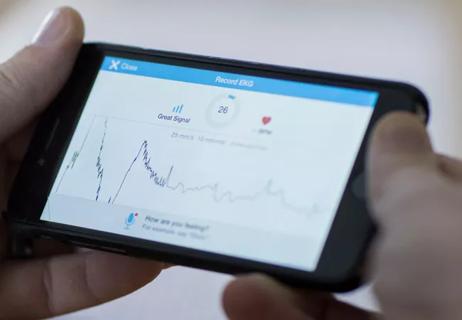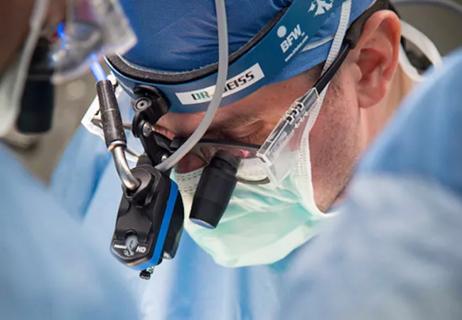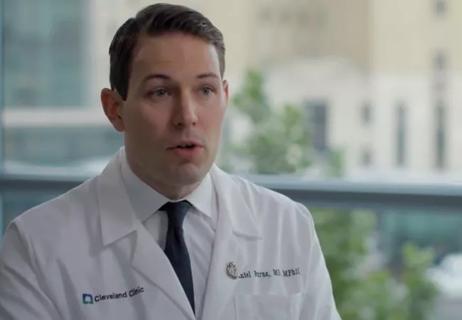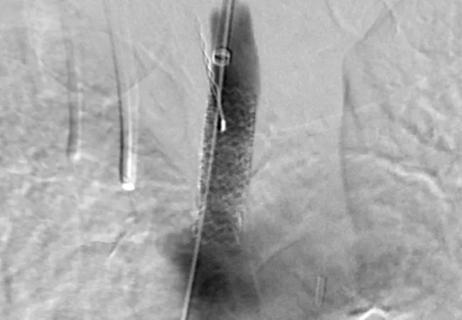An ultra-practical update on current care strategies and emerging therapies
With more than 2,500 patient visits logged in 2018, Cleveland Clinic’s Pericardial Diseases Center cares for one of the largest populations with pericardial disease in the world. The center’s director, Allan Klein, MD, is a recognized global expert in the condition, so he was the go-to person when Cleveland Clinic Cardiovascular Medicine Chair Steven Nissen, MD, decided to explore the latest in pericarditis management for Cleveland Clinic’s “Cardiac Consult” podcast. An edited transcript of their conversation follows.
Cleveland Clinic is a non-profit academic medical center. Advertising on our site helps support our mission. We do not endorse non-Cleveland Clinic products or services. Policy
Dr. Nissen: When we talk about pericardial disease, what are we talking about? Is it one disease or a lot of diseases?
Dr. Klein: Pericardial disease is actually a spectrum of diseases, encompassing acute pericarditis, chronic pericarditis, incessant pericarditis, recurrent pericarditis, constrictive pericarditis, effusive-constrictive pericarditis and rare entities like pericardial cysts, pericardial masses and congenital absence of the pericardium.
Dr. Nissen: You treat a lot of patients with recurrent pericarditis. Tell us about this challenging disorder.
Dr. Klein: Recurrent pericarditis is a clinical syndrome that occurs after patients have an acute pericarditis episode that improves for four to six weeks and then comes back. Recurrence happens in about 30 percent of cases of acute idiopathic pericarditis, and it’s not always treated appropriately. When these patients present at Cleveland Clinic, they often come with recurring chest pain that’s very disabling. These patients are often female and young — in their 30s — and they are unable to do their jobs. Our aim at the Pericardial Diseases Center is to properly diagnose the condition, based on clinical examination and advanced imaging, and get the patients on a course of proper therapy.
Dr. Nissen: Let’s step back and consider a patient who comes in with acute pericarditis. What do they usually complain of? What’s a typical presentation you encounter?
Dr. Klein: Acute pericarditis is defined by clinical criteria from the European Society of Cardiology, which require two of four clinical criteria to be met. These criteria are (1) pleuritic chest pain, often radiating to the left shoulder and causing difficulty lying flat, (2) pericardial friction rub, (3) new diffuse ST-segment elevation or PR-segment depression on electrocardiogram and (4) new or worsening pericardial effusion. Two of those four criteria are needed for a diagnosis of acute pericarditis. Supportive findings include elevated inflammatory biomarkers, such as C-reactive protein or erythrocyte sedimentation rate, and pericardial inflammation on advanced imaging, such as MRI.
Dr. Nissen: What are the causes? Why do people get this disorder?
Dr. Klein: The cause of acute pericarditis generally depends on whether you live in the developed or developing world. In developed countries like the U.S. and European nations, cases are usually idiopathic or caused by a virus — you get the flu or an upper respiratory tract infection and you develop pericarditis. If you live in a nation like India or China, tuberculosis is a leading cause. Another cause, especially in developed countries, is post-cardiac injury syndrome following procedures such as open-heart surgery, ablation for atrial fibrillation or pacemaker implantation. There are also other causes — including autoimmune causes, such as lupus, as well as neoplastic disease — but most cases in the U.S. are idiopathic or viral in origin.
Dr. Nissen: How do you treat the acute episode?
Dr. Klein: With standard therapy, which includes an NSAID such as ibuprofen or aspirin plus colchicine.
Dr. Nissen: There’s been a lot of discussion about the optimal dose of colchicine for these acute patients. How do you use it?
Dr. Klein: For acute pericarditis, it’s standard to give a loading dose of 0.6 mg twice a day and then gradually taper that dose over three months. NSAID therapy is typically a big dose of 800 mg of ibuprofen three times a day, which is tapered over one to two months and given with a proton pump inhibitor to protect the stomach.
Dr. Nissen: And most patients get better?
Dr. Klein: The majority of patients get better and you never hear from them again. But roughly 15 percent get myopericarditis, and 1 to 2 percent go into tamponade. Approximately one-third of patients can have what is called complicated pericarditis with recurrent pericarditis, and 6 percent have multiple recurrences. Approximately 1 to 2 percent can develop constrictive pericarditis.
Dr. Nissen: What’s known about the causes of recurrence?
Dr. Klein: The pathophysiology of recurrent pericarditis is interesting. A person gets a viral illness, and the virus attacks the pericardial cells. Within the cells there are inflammasomes, which produce inflammatory biomarkers such as interleukin-1 alpha and beta. The result can be a mass release of interleukins, and now we are seeing some precision medicine approaches with drugs that block interleukins.
Dr. Nissen: I definitely want to come back to those agents, but you don’t go to those drugs right away. Tell us what the initial therapeutic approach is.
Dr. Klein: It’s a stepwise approach. First-line therapy is very similar for acute and recurrent pericarditis: an NSAID plus colchicine. Acute cases are treated for less than three months, and recurrent cases for up to six months. Often patients also are told not to exercise for three months, to keep the heart rate under 100. This is especially important for athletes.
Dr. Nissen: Why the exercise restriction?
Dr. Klein: Because exercise will put increased strain on the pericardium. A faster or stronger heart or a better ejection fraction will increase strain on the pericardium, causing chest pain. So we tell patients not to exercise.
Second-line therapy is a low-dose steroid — 0.5 mg per kg per day, so roughly 40 mg of prednisone per day. If you give prednisone, it should be tapered very slowly over many months, with monitoring of inflammatory markers, to avoid what’s called the yo-yo effect from too-rapid tapering of the dose, which will lead to recurrence.
Third-line therapy can involve immunosuppressive therapy such as azathioprine or anakinra, which is an interleukin blocker. Fourth-line therapy is surgery — pericardiectomy — and we do a fair number of these surgeries for recurrent pericarditis.
Dr. Nissen: Even without constriction?
Dr. Klein: Even without constriction. At Cleveland Clinic we’re doing roughly two pericardiectomies a month for patients who come to us with intractable recurrent pericarditis; many of these cases are steroid- and colchicine-refractory.
Dr. Nissen: Yes, some of our cardiothoracic surgery colleagues recently reviewed Cleveland Clinic’s experience with pericardiectomy across more than 600 cases from 1977 to 2013. They concluded that despite pericardiectomy’s reputation as a very high-risk operation, it was associated with very low early mortality — specifically, 1.1% — and good long-term survival among patients with idiopathic pericarditis. The only subpopulation with very high risk were those with radiation pericarditis. So these are encouraging findings that pericardiectomy can be a safe and effective operation in experienced hands. Tell me, how long do you wait before pulling the trigger for the more aggressive interventions?
Dr. Klein: That’s a good question. As I mentioned, often these patients are fairly young people who are very active. They can be marathon runners and do triathlons, so this condition can be very limiting to them. So after three to four years of trying the medicine route, I often bring up surgery. Sometimes patients may opt for surgery for other reasons as well.
Dr. Nissen: Is there anything new on the horizon with the inflammasome therapies you mentioned earlier?
Dr. Klein: Several interleukin blockers are being looked by the FDA. The one that’s most popular now for pericarditis, but not FDA-approved for that use, is anakinra. It’s given once a day and can produce very dramatic results. A major trial from Europe called AIRTRIP has shown a dramatic reduction in the number of recurrences with anakinra. I am a national PI for a pilot study of another interleukin blocker, rilonacept, that’s taking place at 10 sites within the U.S. So far it’s been very promising, and an international pivotal randomized withdrawal trial of rilonacept for pericarditis is being planned.
Utility may depend on whether an agent adequately blocks the interleukin-1 alpha or beta receptor without any major side effects. Ongoing work is looking to determine which receptor is most important. These drugs have the opportunity to be a game changer for patients with recurrent pericarditis.
This post was derived from an episode of Cleveland Clinic’s “Cardiac Consult” podcast for healthcare professionals. To hear the 10-minute discussion between Drs. Klein and Nissen, listen to the episode here or subscribe wherever you get your podcasts.

How our first century has impacted cardiovascular practice

Review offers comprehensive assessment of the landscape for wearables and more

Preserving trust in research requires vigilance and consensus around statistical nuances

Cardiac surgeon Patrick Vargo, MD, reflects on his first year as Cleveland Clinic staff

Improved risk prediction for patients is at the heart of Dr. Aaron Weiss’ research interests

Centralization would likely bring better outcomes, experts say, but may not be feasible

Dr. Daniel Burns on mentorship, robotic valve surgery, statistics and more

JACC review makes the case and outlines how to ensure oversight